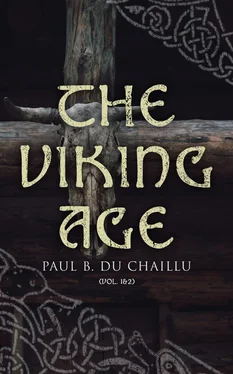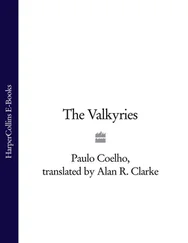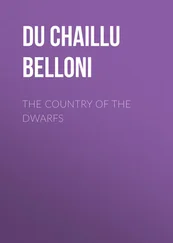In the earliest age the use of metal was unknown, the weapons were made of stone, horn, and bone, 110and towards the close of this age pottery was made.
The first traces of man in some parts of the present Scandinavia are the kjökkenmöddinger (kitchen refuse heaps), consisting of oyster and mussel shells, bones of fish, birds, and mammals, such as the deer, bear, boar, beaver, seal, ure-ox, wolf, fox, &c., &c., with remains of clay vessels. Among and near these heaps of refuse are found a great number of rude implements and weapons made of flint, bone, horn, and broken flint chips, also fireplaces made of a few stones roughly put together, thus showing that the inhabitants lived in a very primitive state.
No graves of the earliest period of the stone age have thus far been found in the North. Towards the latter part of this age we see a great improvement in the making of weapons and tools; the latter were beautifully polished, and graceful in form. Domestic animals had also been introduced, as shown by the bones of cattle, horses, sheep, pigs, and dogs, that have been found in the graves. Beads of amber and bone were worn as ornaments. The graves of the stone age discovered in the present Scandinavia and on the islands and shores of the Baltic may be classified in four groups: the cromlech or dolmen ; the passage or gallery graves ; the free-standing stone coffins ; and the stone coffins covered by a mound . 111
The cromlechs consist of from three to five large stones standing upright, and so placed as to form a ring, with a large block or boulder on the top. These were intended for a single body, buried in a sitting position, with flint implements and weapons. The walls of the chamber were made by large stones, smooth inside, and the floor consisted of sand or gravel. Certain marks on the tops of stones seem to indicate that sacrifices to the dead were prevalent; holes about 2 inches in width are found on the roofs of some cromlechs and passage graves. These cromlechs always occur near the sea, seldom more than seven miles from the coast. The other graves of the stone age are often found far inland, but they are almost always near a lake or river having connection with the sea.
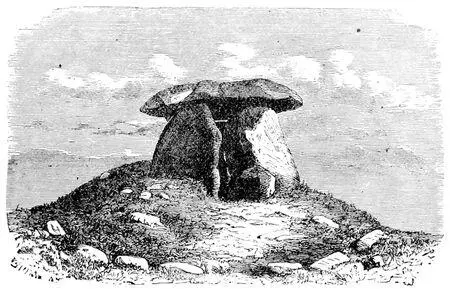
Fig. 2.—Cromlech near Haga, Bohuslän.

Fig. 3.—Cromlech (stendös) with concave recesses on the roof-stone, near Fasmorup, in Skåne.
The cromlechs which appear to be the latest graves of this age have a much wider distribution than the other forms; they are found in nearly all the provinces where the older forms of graves occur. Most of them were in or on the top of a mound, which almost always had the roof, and in most cases part of the wall, uncovered. The mound, which is generally round, sometimes oblong, is surrounded at its base by stones often very large; when this was oblong, the grave was nearer the one end than the other.

Fig. 4.—One of three oblong cromlechs, distance between each about 120 feet, length 52 feet, and width 20 feet, position north and south, Lille Rorbœk, Zeeland. The central one had two stone-built chambers, both with the entrance from the east. The southern burial chamber is now destroyed, while the northern is completely preserved. It is 5½ feet long, and 3 feet wide, and has four walls of stone, three of which support a stone roof.
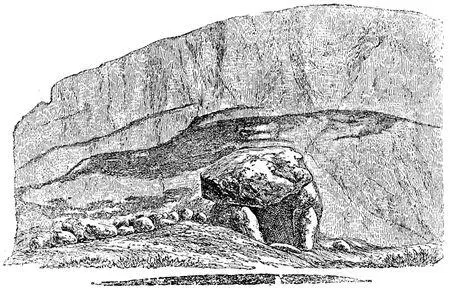
Fig. 5.—Sepulchral chamber covered with a mound, Kallundborg, Zeeland; height about 16 feet. In levelling the mound the earth was found to contain articles which tend to show the existence of a “kjókkenmödding.”
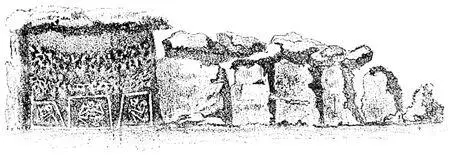
Fig. 6.—Passage grave on Axvalla heath, near Lake Venern, Vestergötland, Sweden, situated on a hill overlooking a flat country. Numerous graves belonging to that period are found in the neighbourhood.
The walls are made by large slabs, those in the passage being lower than the slabs of the quadrangle. The roof is of flat slabs of granite, 5 to 6 feet above the floor, a similar one serving as a door, closing the outer end of the passage, which is 20 feet long, and 2½ to 3 feet broad, and 3 feet high. The mortuary itself (the quadrangle) is 32 feet long by 9 feet broad.
The dead sit along the walls , young and old, men and women, the chin resting in both hands, with their legs drawn up. Thin slabs form the cells round each skeleton, and are about 3 feet high, consequently do not reach the roof. Arrow points, knives, etc., of flintstone, are found with the men, pieces of amber with the women. Numbers of similar graves are found in Sweden and Denmark, a single grave sometimes containing nearly one hundred bodies.
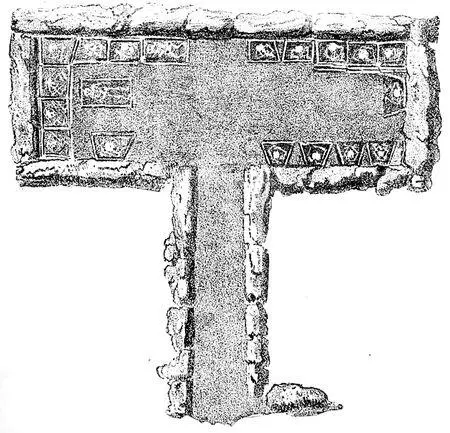
Fig. 7.—Plan of above grave.
Gallery or passage graves consisted of a chamber and a narrow gallery leading into it, the whole being covered by a mound, the base of which was generally surrounded by a circle of larger or smaller stones.
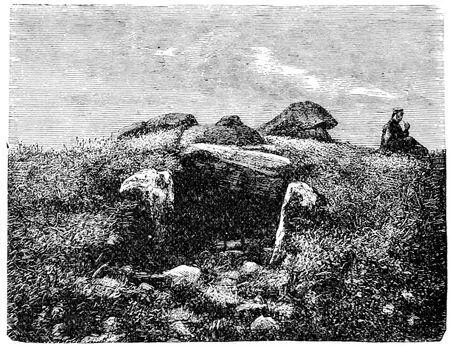
Fig. 8.—Passage grave near Karleby—front view; length of the main gallery, covered by nine large stones, 52 feet; width, 7 feet; length of passage, 40 feet; height, 6 feet.
The chamber in a passage grave is either oblong, square, oval, or nearly round; the walls are formed by large upright blocks, not quite smooth, though even on the inside; the interstices are generally carefully filled up with gravel or fragments of stone, and birch bark is sometimes found between the blocks. The roof was formed by immense flat slabs or blocks, smooth on the under side, but rough on the top, the interstices being closed in the same manner as those in the walls. The floor is sometimes covered with small flat stones, but usually with earth. On the long side of the chamber there is an opening, from which a passage was built in the same manner as the chamber, only longer and narrower. This passage, or more precisely its inner part, was covered with blocks resembling the roof blocks of the chamber, but smaller; near the inner opening of the passage, and the outer end of its covered part a kind of door setting has been often found, consisting of a stone threshold and two narrow doorposts.
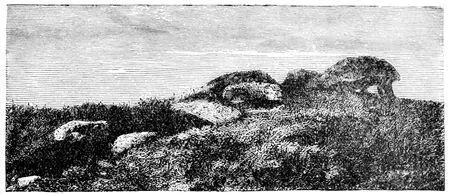
Fig. 9.—Side view of passage grave near Karleby.

Fig. 10.—Ground-plan of passage grave near Karleby.
Читать дальше
